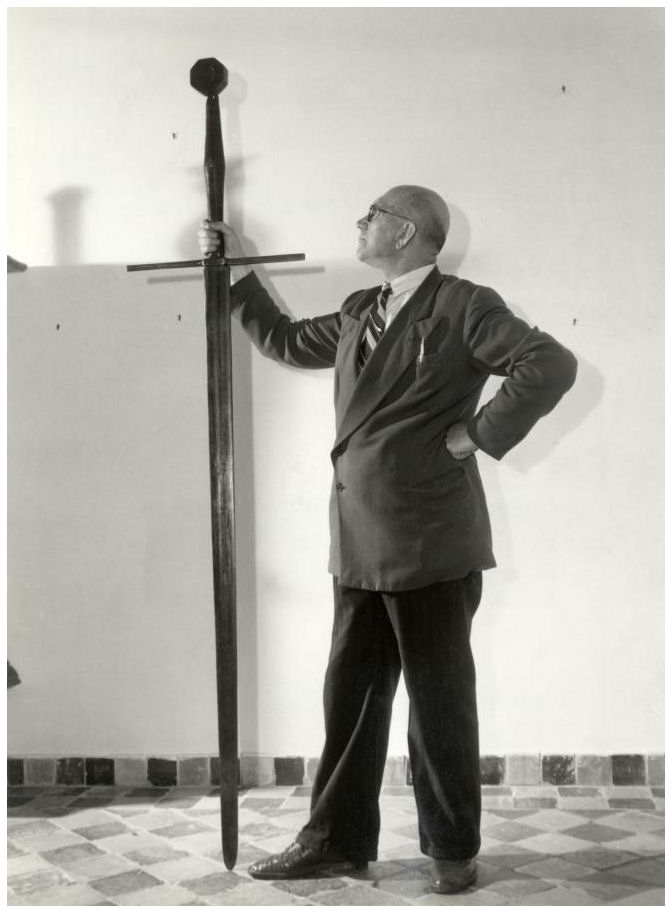Sword of Ulqvist
The Sword of Ulqvist belonged to the ancient Harman chieftain Ulqvist Baegfotur.
However his sword it far more famous. The blade being close to one meter and half long, with a width of 15 cm, making it the largest sword ever made. Historians believe that this also attests to the size and strength of Ulqvist Baegfotur, for him to be able to wield it. The sword currently resides in the vaults of the Northern Historical Society. The sword is not on display for the general public, due to its mysterious effect called "Baegfotur's Curse". However, a replica is on display in the museum.
The sword is made from an unknown metal or alloy, which is believe to cause its harmful effects. The metal interferes heavily with radio-transmissions and is shown to be non-oxidizing and non-magnetic. While short exposure can cause a rash, it is long time handling; that causes its famed and horrific effect.
There are no texts on the creation of the sword, that could help. Historians believe this is not a coincidence, given its uniqueness. It's likely that Ulqvist Baegfotur, would not want such information to fall in the hands of a rival.
Description
The sword dates to the second century and it belonged to an ancient chieftain named Ulqvist Baegfotur. He is believed to have been living in the mountains of Harm. Historical texts describe him as being quite intelligent, but also brutish. Ruling through the means of might over compassion.However his sword it far more famous. The blade being close to one meter and half long, with a width of 15 cm, making it the largest sword ever made. Historians believe that this also attests to the size and strength of Ulqvist Baegfotur, for him to be able to wield it. The sword currently resides in the vaults of the Northern Historical Society. The sword is not on display for the general public, due to its mysterious effect called "Baegfotur's Curse". However, a replica is on display in the museum.
The sword is made from an unknown metal or alloy, which is believe to cause its harmful effects. The metal interferes heavily with radio-transmissions and is shown to be non-oxidizing and non-magnetic. While short exposure can cause a rash, it is long time handling; that causes its famed and horrific effect.
There are no texts on the creation of the sword, that could help. Historians believe this is not a coincidence, given its uniqueness. It's likely that Ulqvist Baegfotur, would not want such information to fall in the hands of a rival.





Comments